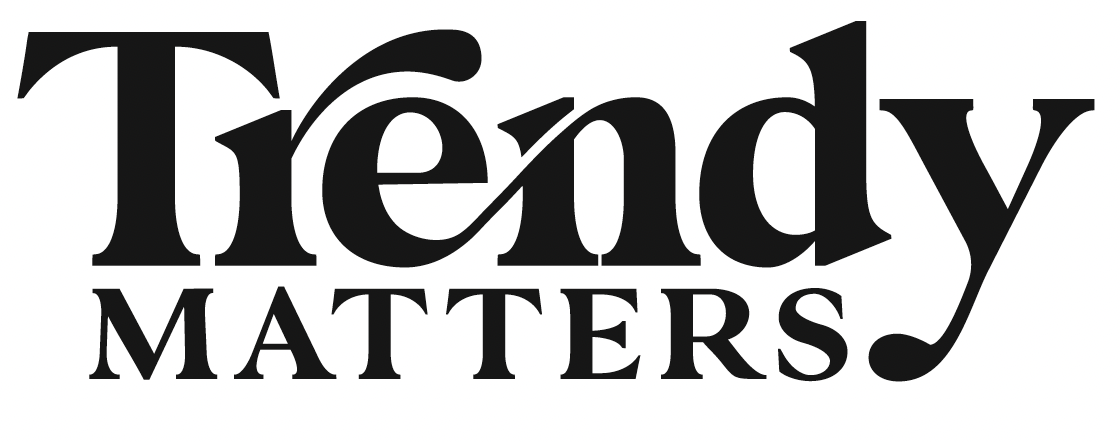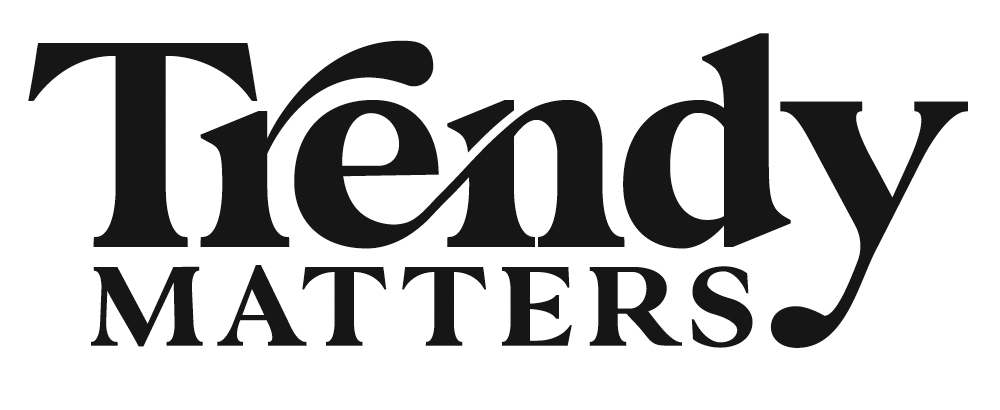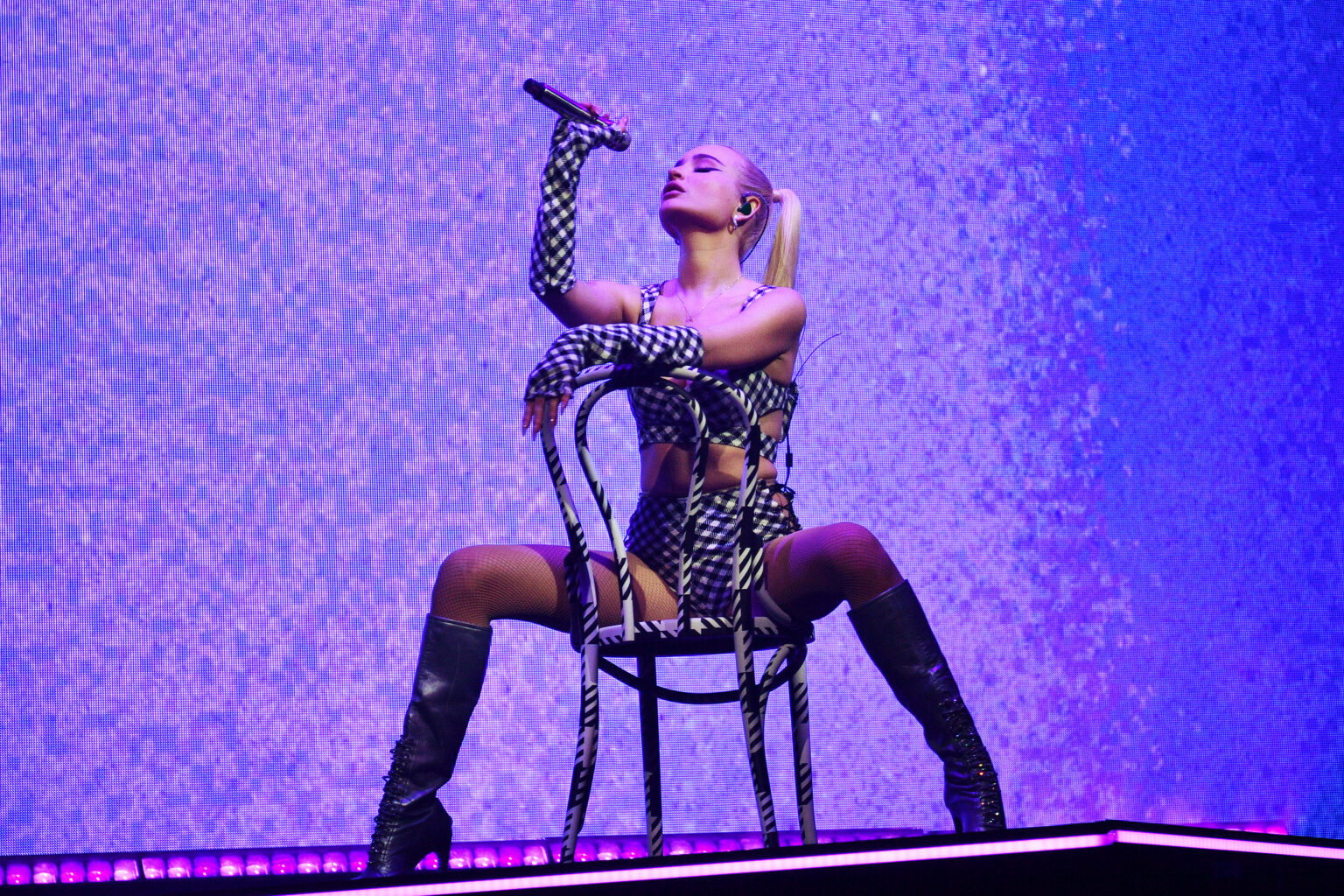When pop star Kim Petras covered Running Up That Hill in 2022, she wasn’t just reviving a classic—she was paying tribute to a song whose message once echoed in secret for countless queer and gender-nonconforming listeners.
The song’s resurgence in popularity invites us to look back at Kate Bush’s original song, where hidden symbolism and layered meanings spoke to a generation still finding itself in the shadows.
What was the deeper story behind Running Up That Hill when it first debuted in 1985?
Before we get started, it’s important to note that it’s important to note that Kate Bush has never said she does or doesn’t identify as trans. However, she has been known to integrate storytelling from various vantage points into her songwriting—and this may be one aspect she explored. One hallmark of quality art is when many people can resonate with it in different ways.
Let’s revisit Bush’s veiled, artistic interpretation of gender identity struggles and the desire to transcend hard-set cultural limitations and societal barriers from another era.
More Than Meets the Eye
In 2022, Netflix’s popular show Stranger Things had a scene that featured Kate Bush’s 1985 single Running Up That Hill, thrusting the song back into the limelight. But it wasn’t just the catchy 80s synth beats that struck a chord.
A topical interpretation of Running Up That Hill speaks to the difficulty of understanding another’s experience across the gender divide. But the imagery of the video hints at something much more intricate and personal—having to suppress a true self, one that would become a fast target of hatred and oppression.
“Is there so much hate for the ones we love?
Oh, tell me, we both matter, don’t we?”
These lyrics beg the question: Would Bush be hated for trying to relate her experience as a women to a man in a heteronormative culture? Or could Bush be talking to the man who lives within her—the person she has to hide?
Unpacking Kate Bush’s Running Up That Hill Music Video
A closer look at the music video reveals a deeply layered, visual metaphor—one that finds modern-day resonance.
In the video, Bush and Michael Hervieu perform an interpretive dance, clothed in matching, billowy gray outfits that blur the boundaries between them. The choice of gray as the color suggests neutrality. They intertwine bodies, and at times, give the visual illusion of conjoining.
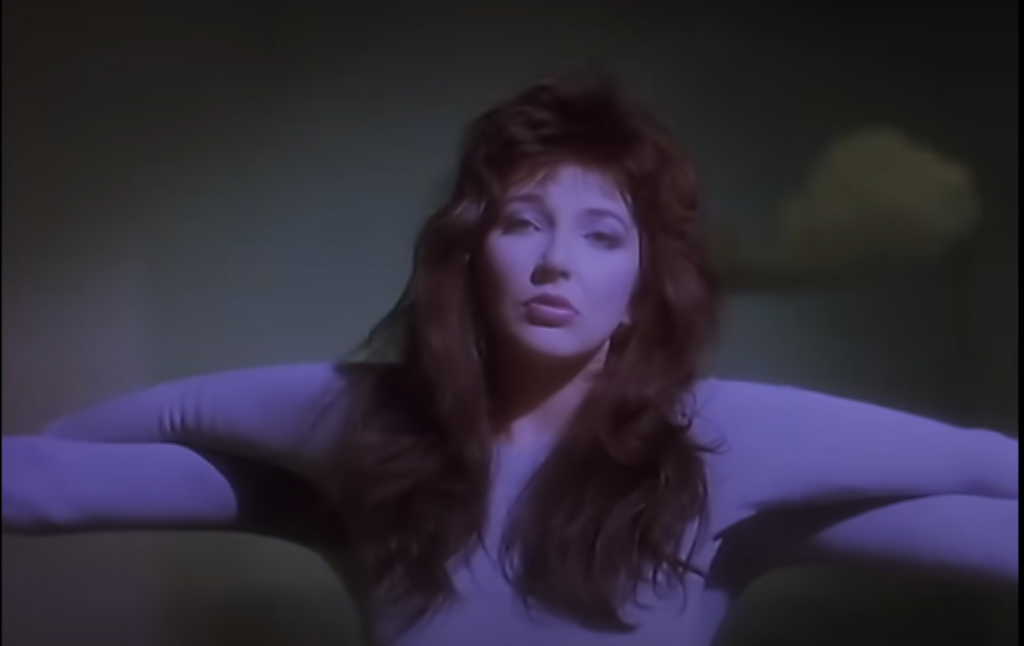
The visual impact is that it’s difficult to tell where Harvieu ends and Bush begins—implying a convergence of identities more than it does understanding contrasting experiences.
In parallel sequences, Bush finds herself in a hallway with crowds of people dressed in the same gray attire she and Hervieu wear in their dances.
In the first hallway, she pushes through a sea of masked figures wearing Hervieu’s face. She’s visibly distressed, reaching out and straining to get in front of the crowd. She fails to do so.
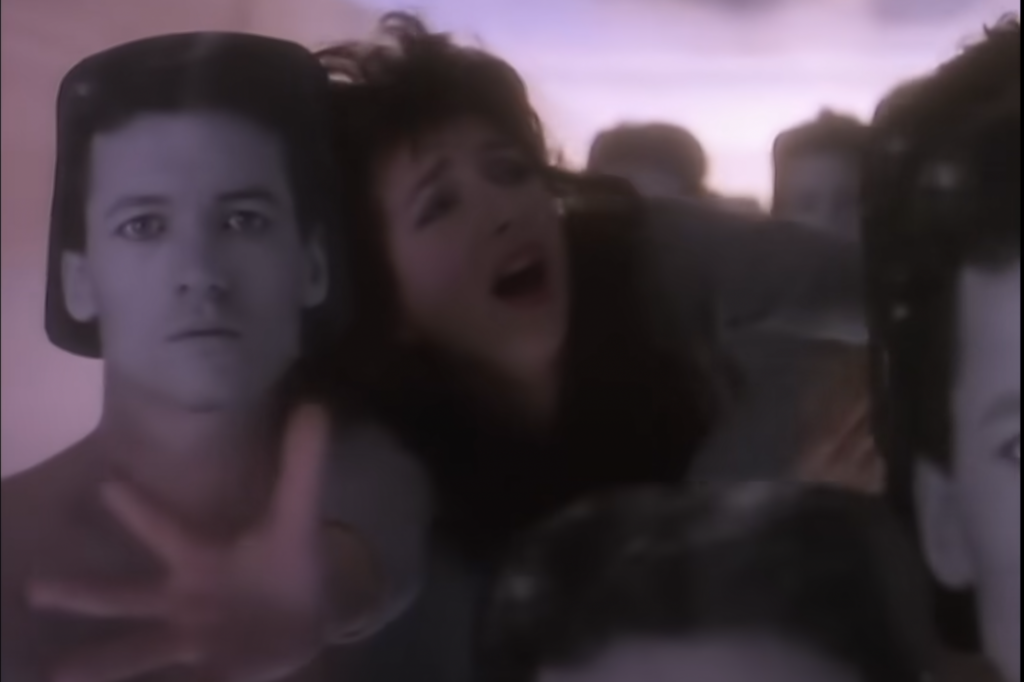
After another short dance interlude, we see her navigating the same hallway again—but this time, the mask the crowd is wearing is one of her face.
Except this time, she doesn’t “make her way” in the crowd. She simply appears in it—an allegory of being born into form. In this scene Bush doesn’t try to push through the crowd or struggle as she does in the first scene.
Instead, she closes her eyes and sinks in without resistance, like a quiet acceptance—or perhaps resignation—into her environment.
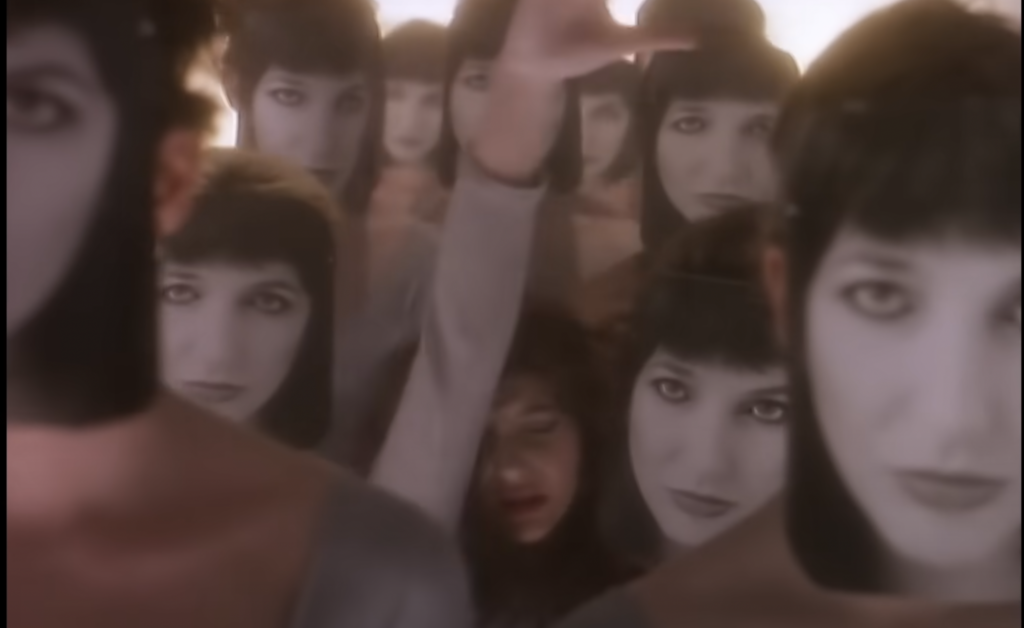
The contrast between the two scenes is striking. Bush struggles against the masculine crowd but surrenders to her female doubles. This shift suggests a passive acceptance of the form she “appeared” in.
Trans Experience In the 1980s Culture
In the hyper-gendered world of the 1980s, pushing past the binary or exploring gender fluidity was met with resistance, rejection, and real danger. The hallway scenes illustrate that though conflicted, leading her own identity would be a relentless struggle.
The 1980s have been referred to as the “Trans Dark Ages,” a period where there was zero social tolerance, no such thing as “being out,” and certainly no rights or protections for trans individuals.
As trans writer Allison Washington reflects:
“If you didn’t pass you were in trouble; if you did, you were stealth. We all started out in trouble and got out of it as fast as possible. And as for those who couldn’t achieve passing privilege, I’m sorry to say I don’t know what became of them; women appeared, women disappeared, and I’ve no idea what became of any of them.”
Gender-affirming care existed, but was inaccessible to most. The Reagan Administration has classified it as “experimental,” barring it from federal insurance coverage. Private insurers followed suit. That guideline remained in place until 2014, when the Affordable Care Act included Section 1557.
In context, Bush’s scene in the Hervieu-masked crowd remains relevant in the modern discourse: Trying to move forward in a world that pushes back. Her silent surrender in the following scene—melting into a crowd of female masking.
With gender-affirming care and even self-expression under fierce scrutiny to this day, Bush’s video feels like a metaphor ahead of its time.
Was Bush exploring her own questions around identity in a way that would “pass” the heteronormative lens, abstracted just enough to escape detection from an unforgiving culture?
After all, the video seems to be relaying that despite how she feels on the inside, she may not have the strength to run up the hill of societal standards. In fact, in one scene in the video, Bush is on the ground, cowering from shadowy figures towering over her. She fearfully gets up and tries to run against them.
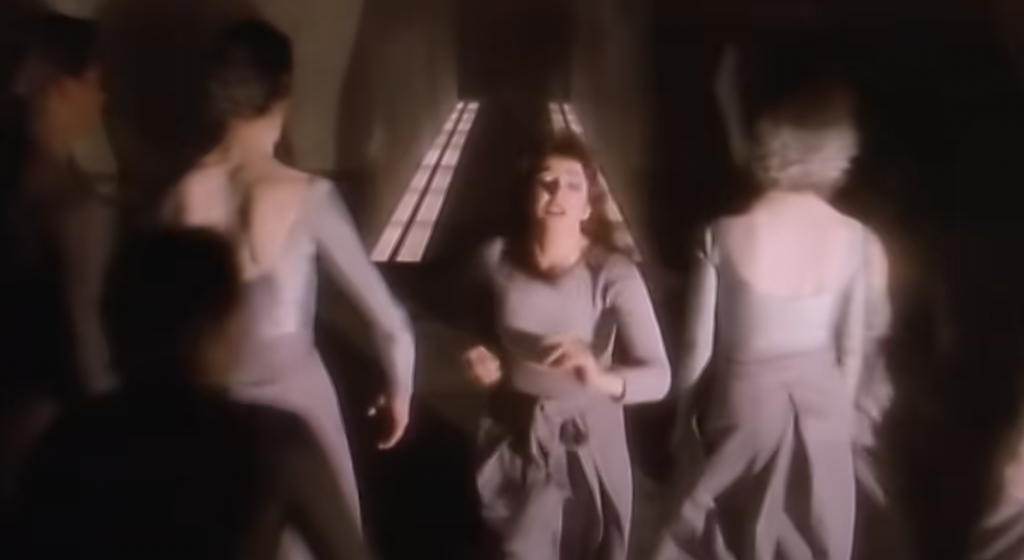
As the video closes, Bush and Hervieu face off in a spinning, mirrored dance. Bush is in full make up for the first time in the video, hyperbolizing her femininity, while Hervieu mirrors her expressions and moves with a knowing precision. As Bush raises her hands, drawing an invisible bow, Hervieu follows suit.
But in this personal moment, Bush isn’t reaching out to someone else—she is looking at a reflection of herself.
If I only could, I’d make a deal with god, and I’d get him to swap our places
Running Up That Hill Today
Considering the themes, perhaps the Stranger Things feature wasn’t the only tailwind pushing Bush’s song into the cultural zeitgeist almost 40 years later.
Between that and Kim Petras’s cover, Bush’s vision gains fresh relevance and gives the underrated song the long-overdue credit it deserves. But it’s also a tribute to the budding awareness and tolerance surrounding gender identity.
Petras’s powerful rendition of the ballad may be a full-circle moment in history. As an openly trans performer and the first to win a Grammy, Petras is able to cover Running Up That Hill from a place of publicity and transparency that Bush may have only been able to cautiously allude to.
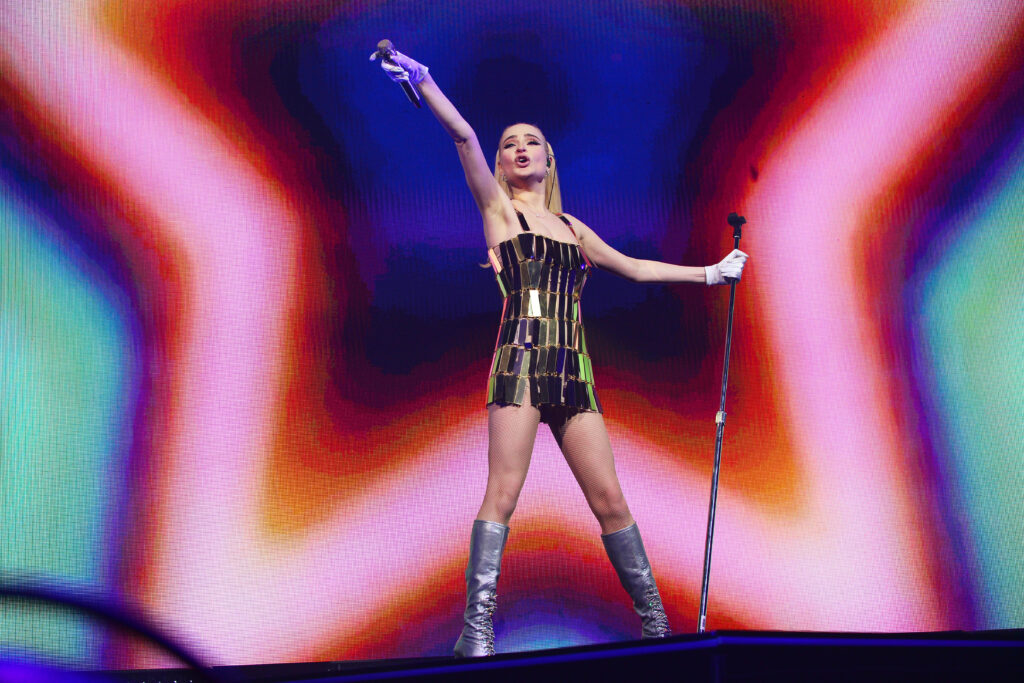
“I love this song because I love Kate Bush, but also because its meaning and her struggle for equality,” Petras said in a statement with the cover’s release. “It means so much, and it’s so elusive. You can definitely decide what you want it to mean.”
Petras, known for her bubblegum, sexually charged pop anthems about designer purses and casual liaisons, takes a surprising step outside her usual brand with this cover. Running Up That Hill showcases her vocal range and raw emotion, hinting at depths far beyond the playful bravado of Sl*t Pop and Sl*t Pop Miami that surprises even the most die-hard of Petras fans.
Another reminder that there’s much more to identity than meets the eye.
The opinions and thoughts expressed in this article are solely that of the author. Trendy Matters has no affiliation with any of the people mentioned in this article.
